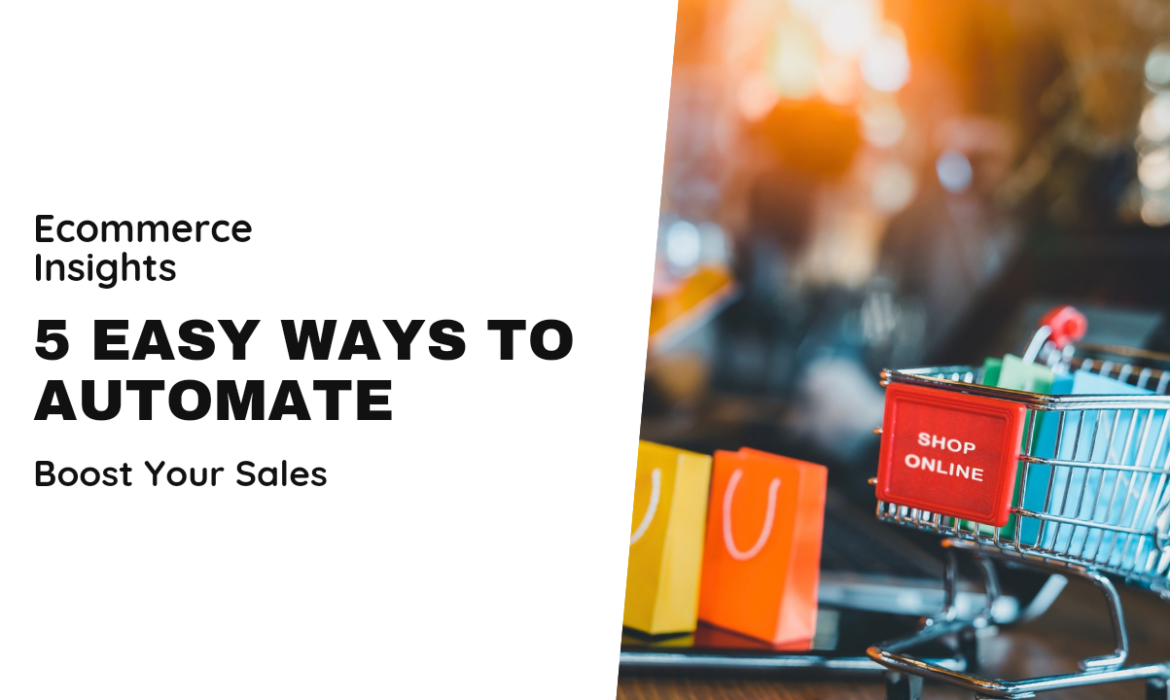081-4797-7173
Running a dropshipping business can be incredibly rewarding, but it also comes with its fair share of challenges. For beginners, juggling product research, marketing, order management, and customer service can feel overwhelming.
This is where automation comes in. By automating repetitive tasks, you can save time, reduce errors, and focus on scaling your business.
In this guide, we’ll explore five simple ways to automate key aspects of your dropshipping business. Whether you’re looking to improve order fulfillment, streamline marketing, or handle customer inquiries more efficiently, these strategies will set you on the path to success.
Automating Product Research
Finding the right products to sell is crucial for any dropshipping business, but it can be a time-consuming process. Thankfully, automation tools can make this task significantly easier and more efficient.
Start by leveraging product research tools like Oberlo, Zik Analytics, or Niche Scraper. These platforms analyse market trends, highlight best-selling items, and provide insights into potential profit margins. For instance, Oberlo allows you to explore trending products and their performance data in just a few clicks.
In addition, consider using Google Trends to identify seasonal or emerging product trends. This tool provides real-time data on what consumers are searching for, enabling you to make data-driven decisions.
Moreover, competitor analysis can also be automated. Tools like Shopify Inspector or SEMRush can track the performance of competitors’ stores, showing which products are generating the most sales.
By automating product research, you free up valuable time to focus on other critical aspects of your business, such as branding and customer engagement.
Automating Order Processing
Order processing is one of the most repetitive tasks in dropshipping, yet it is vital for maintaining customer satisfaction. Automating this process not only saves time but also ensures accuracy in handling orders.
Utilising Dropshipping Apps: Tools like Oberlo, Dropified, and Spocket simplify the order fulfilment process by syncing your store directly with suppliers. These apps automatically transfer customer order details to suppliers, eliminating the need for manual data entry.
Inventory Management Automation: Apps such as Inventory Source and TradeGecko help you keep track of stock levels in real time. This ensures you avoid selling out-of-stock products, which could lead to negative customer experiences.
Shipping Notifications: Many dropshipping platforms also offer automatic updates on shipping and tracking. For instance, Shopify’s order tracking apps automatically send customers real-time updates about their orders, reducing the need for manual follow-ups.
Automating Customer Support
Exceptional customer service is a cornerstone of successful dropshipping, but handling customer queries can be time-consuming. Automating parts of your customer support ensures quicker responses while maintaining quality.
Using Chatbots: Tools like Tidio, ChatGPT-powered bots, and Zendesk AI can handle common customer queries 24/7. Whether it’s providing shipping updates or answering product-related questions, chatbots offer instant solutions without human intervention.
Setting Up Email Automation: Email platforms like Klaviyo and Mailchimp can be used to automate responses to customer inquiries. For instance, automated emails can send order confirmations, shipping updates, and post-purchase follow-ups, which helps build trust and engagement.
Creating a Comprehensive FAQ Page: A well-organised FAQ section can address most customer concerns upfront, reducing the volume of inquiries. Linking this section in your automated responses further enhances its effectiveness.
Streamlining Marketing Efforts
Marketing plays a crucial role in the growth of your dropshipping business, but manually executing campaigns can be overwhelming. By automating your marketing strategies, you can reach a wider audience while saving time and effort.
Social Media Automation: Platforms like Hootsuite and Buffer allow you to schedule posts across multiple channels in advance. For instance, you can create a week’s worth of promotional content and set it to publish automatically, ensuring consistent engagement with your audience.
Email Marketing Automation: Automated email campaigns through tools like Mailchimp or ConvertKit can help you nurture leads and retain customers. From welcome sequences to abandoned cart reminders, these tools ensure your audience receives timely, relevant messages without manual intervention.
Ad Campaign Management: Tools like AdEspresso and Google Ads Manager help streamline paid advertising efforts. They enable you to monitor performance, adjust bids, and optimise targeting—all automatically—so your campaigns remain effective.
Personalisation with AI: Advanced tools like HubSpot or Omnisend use AI to personalise marketing messages. For example, they can recommend products based on a customer’s browsing history, increasing the likelihood of conversion.
Optimising Customer Support
Providing excellent customer service is critical to maintaining trust and loyalty, but it can become overwhelming as your business scales. By leveraging automation, you can streamline your support process without compromising quality.
Chatbots for Instant Assistance: Chatbots powered by AI, like Tidio or Zendesk Chat, can handle common customer queries 24/7. For example, they can provide order updates, answer product questions, or guide customers through your website, ensuring prompt responses even when you’re unavailable.
Automated Ticketing Systems: Platforms like Freshdesk or Zoho Desk automatically categorise and assign customer inquiries to the right support teams. This reduces response time and ensures no query goes unanswered.
Self-Service Resources: Developing an automated FAQ section or a knowledge base allows customers to find answers independently. Tools like Helpjuice can help you create and manage these resources, providing instant solutions while reducing your support workload.
Feedback Collection: Automating surveys and feedback forms after purchase lets you understand customer satisfaction levels. Tools like SurveyMonkey or Typeform can help you gather valuable insights without manual effort.
Conclusion
Automation is no longer a luxury but a necessity in the competitive world of dropshipping. By integrating tools and systems that handle repetitive tasks, you free up time to focus on scaling your business and improving customer satisfaction.
From inventory management to marketing strategies and customer support, automation offers endless possibilities to make your operations more efficient.
However, it’s essential to choose the right tools tailored to your business needs and goals. Start small by automating one or two aspects of your business and gradually expand as you become more comfortable.
Remember, automation isn’t about replacing human effort but enhancing it, ensuring that your dropshipping store remains competitive while delivering value to your customers.
0






